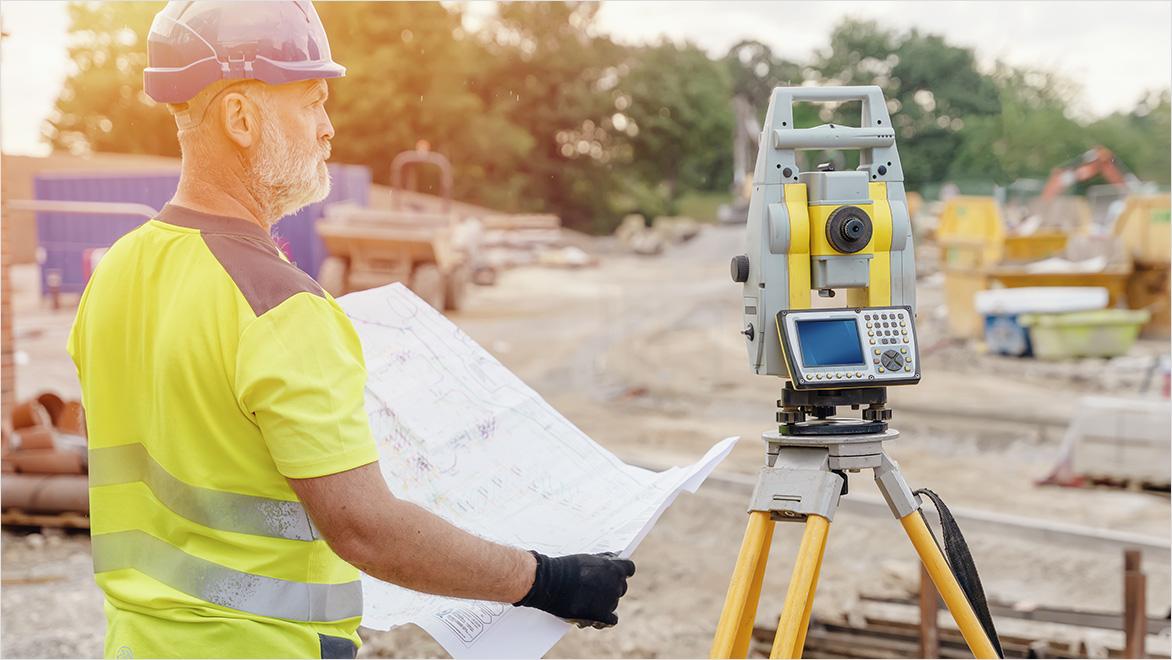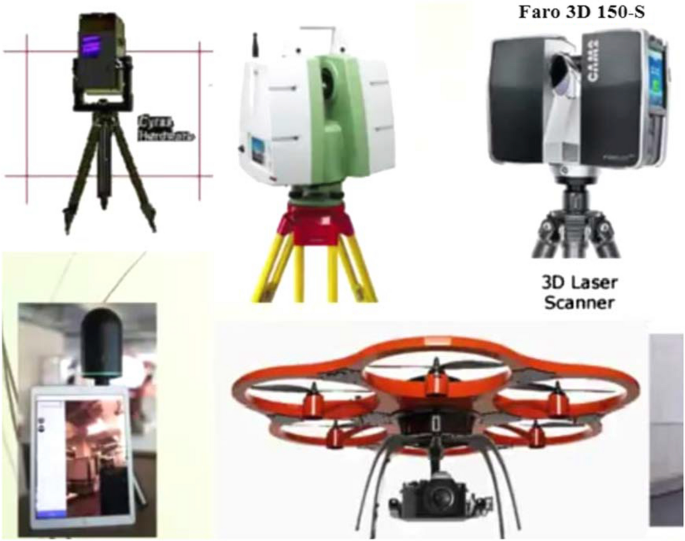Common Questions About 3D Scanning for Builders
Wiki Article
Exploring the Applications of 3D Laser Scanning in Archaeology and Cultural Heritage Preservation
The integration of 3D laser scanning technology in archaeology and cultural heritage preservation marks a considerable improvement in just how archaeological sites and artefacts are recorded and assessed. This non-invasive approach gives accurate spatial information, revealing detailed details that were previously challenging to catch. As the applications of this modern technology proceed to progress, various effects for documents, conservation, and education and learning arise, welcoming additional exploration right into its transformative effect on the field.Recognizing 3D Laser Scanning Innovation
3D laser scanning modern technology has actually revolutionized the field of archaeology by giving detailed and precise spatial data. This innovative modern technology utilizes laser light beams to catch countless information factors from a things or site, developing an extremely accurate three-dimensional depiction (3D Scanning). The resulting point clouds can expose detailed details of historical sites, structures, and artefacts that might be unseen to the naked eyeUtilizing this modern technology, archaeologists can record the exact measurements, shapes, and placements of items with extraordinary accuracy. This approach reduces the risk of human mistake and eliminates the demand for substantial hands-on dimensions. The data collected can be examined and shared conveniently, facilitating collaboration among scientists. By incorporating 3D laser scanning with GIS and other digital tools, excavators boost their capacity to imagine and translate historic contexts, bring about much deeper insights into ancient societies and settings.
Enhancing Historical Documents
3D laser scanning significantly boosts archaeological documentation via its capability to develop precise site maps. This innovation helps with comprehensive artefact evaluation, offering insights that standard methods might overlook. Furthermore, it assures the conservation of contextual data, which is crucial for comprehending the relationships within historical sites.Exact Website Mapping
While standard mapping methods commonly battle with catching the elaborate details of historical sites, progressed laser scanning technology supplies an advanced approach to exact website mapping. This technique makes it possible for archaeologists to develop very described and specific three-dimensional depictions of websites, showcasing topographical variants and structural attributes with amazing fidelity. The ability to record countless data factors in a matter of minutes enables thorough documents, which can be quickly updated and shared amongst scientists. Additionally, laser scanning assists in the measurement of complicated geometries that would be challenging to examine making use of traditional devices. As an outcome, this innovation improves the precision of site maps, adding significantly to the conservation and understanding of social heritage resources.Comprehensive Artefact Analysis
Laser scanning innovation substantially enhances the evaluation of archaeological artifacts, offering scientists with unprecedented information and accuracy. This approach captures elaborate surface textures, dimensions, and features that typical documentation techniques might ignore. By creating high-resolution 3D models, scholars can very closely analyze artefacts without the risk of damage fundamental in physical handling. This precision permits far better comparative researches, making it possible for professionals to recognize production methods, stylistic variations, and potential social value. Additionally, the capability to manipulate and visualize information in 3 measurements facilitates a much deeper understanding of artifact capability and use. On the whole, laser scanning cultivates a much more extensive method to archaeological documents, making certain that essential information concerning artifacts is preserved for future study and education.Preservation of Contextual Data
Preserving contextual data is important for improving archaeological documents, as it ensures that searchings for are recognized within their initial ecological and cultural structures. 3D laser scanning technology considerably contributes to this preservation effort by catching detailed spatial connections amongst artifacts, frameworks, and their atmospheres. By generating exact 3D models, excavators can record the exact areas and alignments of items sitting, assisting in a complete understanding of their context. This technology makes it possible for scientists to review and analyze websites long after excavation, preserving the integrity of contextual info. Furthermore, digital records created with scanning can be shared internationally, promoting collective research study and public involvement. Ultimately, maintaining contextual data with 3D laser scanning improves archaeological narratives and advertises a more extensive appreciation of cultural heritage.Conservation of Cultural Heritage Sites
As innovations in technology continue to advance, the preservation of cultural heritage sites has become progressively dependent on innovative techniques such as 3D laser scanning. This innovation enables the in-depth documents of frameworks, artefacts, and landscapes, recording their accurate dimensions and spatial partnerships in a non-invasive fashion. By creating high-resolution 3D designs, scientists can keep track of and assess deterioration patterns, allowing aggressive conservation techniques.In addition, 3D laser scanning facilitates the sharing of in-depth website information with the global neighborhood, advertising cooperation among archaeologists, historians, and preservationists. These designs serve as important sources for education and public interaction, increasing understanding of social heritage concerns. In addition, the electronic documents produced can guard versus loss as a result of environmental elements, vandalism, or overlook. In general, 3D laser scanning represents a transformative approach to the conservation of social heritage, guaranteeing that these sites can be examined and appreciated by future generations.

Restoration and Repair Efforts
The thorough paperwork attained through 3D laser scanning plays a considerable function in reconstruction and reconstruction efforts within archaeology. This innovation provides accurate measurements and high-resolution images, enabling exact digital models of artefacts and structures. These models act as essential recommendations throughout remediation processes, allowing archaeologists to envision the initial design and make informed decisions concerning methods and products required for repair service.Additionally, 3D laser scanning promotes the restoration of damaged or lost elements by creating comprehensive replicas. This procedure aids in guaranteeing that reconstructions keep historic stability while likewise permitting cutting-edge strategies to recover websites. The capability to examine wear patterns and architectural weaknesses through scanned data improves understanding of a site's historic context and its usage gradually. Subsequently, 3D laser scanning not just protects the physical elements of cultural heritage yet likewise enriches the narrative of history, assisting future restoration endeavors.
Educational and Research Study Opportunities
The integration of 3D laser scanning in archaeology opens significant academic and research possibilities. Academic partnerships can enhance the understanding of old sites, while specialized training workshops furnish specialists with crucial skills for using this innovation. With each other, these initiatives cultivate a richer interaction with historical practices and methods.Academic Collaborations in Archaeology
Joint efforts in archaeology have become progressively important for progressing both educational and research study possibilities. By fostering partnerships amongst universities, study institutions, and cultural heritage companies, these collaborations promote the exchange of expertise and resources, improving the top quality of historical studies. Joint jobs usually take advantage of varied know-how, allowing for comprehensive evaluations and innovative methods, specifically in the application of modern technologies like 3D laser scanning. Such cooperations additionally advertise interdisciplinary approaches, engaging fields such as preservation, location, and history science. In enhancement, scholastic partnerships typically bring about the development of new curricula and training programs, preparing the next generation of archaeologists to efficiently use innovative modern technologies in their job. Inevitably, these partnerships add to the conservation and understanding of social heritage.Training Workshops for Professionals
Educating workshops for experts in archaeology are progressively important for enhancing skills in the application of advanced modern technologies such as 3D laser scanning. These workshops supply participants with hands-on experience in using innovative tools and software, cultivating a much deeper understanding of data capture and analysis procedures. Specialists can discover to create exact electronic designs of archaeological websites, which significantly help in documentation and conservation initiatives. In addition, these training sessions commonly include conversations on best methods and study, promoting understanding exchange amongst individuals. By purchasing continual education, experts can stay upgraded on developing technologies, eventually improving the efficiency of their study and cultural heritage conservation efforts. This dedication to skill improvement is crucial for advancing the area of archaeology.Future Fads in 3D Laser Scanning for Archaeology
As innovations in innovation proceed to reshape numerous fields, the future of 3D laser scanning in archaeology guarantees to next page boost both the precision and efficiency of site documents and analysis. Arising trends suggest an expanding integration of fabricated knowledge and artificial intelligence, promoting automated data processing and interpretation. This development will certainly allow archaeologists to examine complex datasets faster, bring about faster insights into historical contexts.In addition, the integration of drone innovation with 3D laser scanning is most likely to increase, making it possible for comprehensive aerial like this surveys of archaeological sites that are tough to access. The enhancing affordability of scanning devices will democratize gain access to, equipping smaller sized organizations and independent scientists to use these tools successfully. Furthermore, improvements in online truth and enhanced truth will enable immersive experiences for public engagement and education, making historical searchings for extra interactive and obtainable. These fads collectively signify a transformative future for archaeology, improving preservation efforts and expanding the technique's outreach.
Regularly Asked Concerns
How Much Does 3D Laser Scanning Tools Expense?

What Are the Limitations of 3D Laser Scanning?
The constraints of 3D laser scanning include high expenses, possible data handling difficulties, level of sensitivity to environmental problems, and trouble capturing complex information in complex surfaces, which can affect the accuracy and efficiency of checked depictions. (3D Scanning)
Can 3D Laser Scanning Be Utilized Underwater?
Yes, 3D laser scanning can be made use of undersea, however it requires customized tools and methods to overcome obstacles such as water distortion and restricted visibility. Effective applications have actually been demonstrated in aquatic archaeology and underwater studies.Just how Long Does a Scanning Task Commonly Take?
A scanning job generally takes anywhere from a couple of days to a number of weeks, depending on the intricacy and size of the location being scanned, together with the preparation and post-processing demands involved in the task.Exist Particular Software Program Demands for Handling 3D Scans?
Yes, details software application needs for processing 3D scans consist of programs with the ability of taking care of large factor clouds, such as Autodesk ReCap, Cyclone, or MeshLab. These tools promote analysis, visualization, and assimilation into different applications efficiently.The combination of 3D laser scanning modern technology in archaeology and cultural heritage conservation notes a significant improvement in how historical websites and discover this artefacts are documented and examined. 3D laser scanning modern technology has reinvented the area of archaeology by offering comprehensive and specific spatial data. As developments in innovation proceed to evolve, the preservation of social heritage websites has actually become increasingly dependent on cutting-edge approaches such as 3D laser scanning. As advancements in innovation continue to improve different fields, the future of 3D laser scanning in archaeology promises to improve both the precision and effectiveness of website documents and evaluation. The assimilation of drone modern technology with 3D laser scanning is likely to expand, enabling complete airborne studies of historical sites that are tough to accessibility.
Report this wiki page